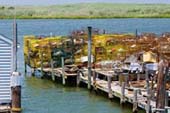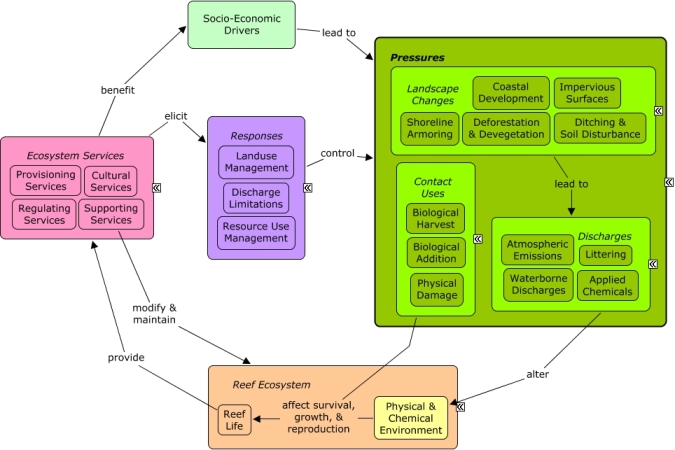ReefLink Database

Pressures
Pressures are human activities that create stress on the environment. They include Landscape Changes resulting from alterations of the natural landscape, Discharges of pollutants, and Contact Uses that directly remove, damage, or add to the reef ecosystem.
CMap

CMap Description
Socio-economic drivers generate human activities that create pressures on the environment. Discharges of pollutants alter the physical & chemical environment, while contact uses can directly affect the survival, growth, & reproduction of reef life. Landscape changes can cause physical damage or alter the rates and distribution of discharges. Changes in the quality and functioning of the reef ecosystem have an impact on the provision of ecosystem services, which directly or indirectly benefit socio-economic drivers. Often the drivers that benefit from the ecosystem are the same drivers that exert pressures on the ecosystem. Humans make decisions in response to the impacts on ecosystem services or their perceived value. Responses may seek to control pressures through regulations or technology that limit human activities or attempt to modify human behavior.Citations
More than 50 citations. Click here to load.
| Citation | Year | Study Location | Study Type | Database Topics |
|---|
Management Options
More than 50 management options. Click here to load.
| Management Option | Description | Sources | Database Topics |
|---|
Laws
More than 50 laws. Click here to load.
| Legal Citation | Purpose of Law | Management Organization | Database Topics |
|---|
